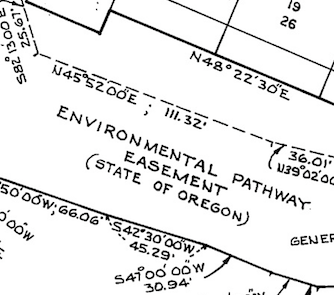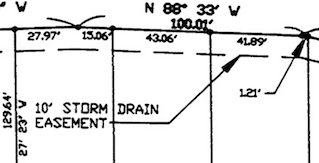Easements are very common in condominium and homeowner associations throughout Oregon and Washington. Simply put, an easement is the right of someone to use or access the property of another.
There are numerous forms of easements. For example, an owner may have the right to drive across their neighbor’s property in order to access their own property. This is called an "easement appurtenant", where there is a dominant estate (the property where the driveway is located) and a servient estate (the property benefited by the use of the driveway).
The other type of easement is called an easement in gross. With this type of easement, the ownership of an adjacent parcel doesn’t matter. An easement in favor of a utility company through a subdivision is an easement in gross—it doesn’t matter that the utility company doesn’t own adjacent property.
Either type of easement may be created in a variety of ways. Typically, easements are written and then recorded in the county records. The written document will detail the duration of the easement, the permitted uses, and who should maintain the easement area. If the written document does not specifically state how long the easement lasts, the easement will typically last in perpetuity.
Besides a formal written agreement to create an easement, there are other ways that easements may be created. Similar to adverse possession, an easement may be created by “prescription.” This is similar to adverse possession, where an individual may take ownership of property by unauthorized, but continuous possession or use. For example, if I walk across my neighbor’s property to access the beachfront (without my neighbor’s permission), I may ultimately create a prescriptive easement.
Another way to create an easement without a written agreement is through an easement by necessity. Suppose I split my property into two separate lots, and sell one of the lots to a third party. But the only way for the new owner to access the highway is across the parcel I kept. The courts in that case would likely grant an easement of necessity.
Homeowner and condominium associations are affected by several types of easements. First, utility companies have easement rights to establish and maintain water lines, sewer lines, and electrical wiring. In association with common property, the right of owners to use those areas is an easement right. Lastly, many governing documents provide a “right of entry” authorizing the association to enter lots or condominium units to remedy violations. This too, is a type of easement.
Here are some depictions of easements common in homeowner and condominium associations:
This is an easement in favor of the State of Oregon. This easement is a walkway/bikepath open and accessible to the public.
The easement shown here is for a storm drain. The easement runs along the length of the individual owners' lot lines.
The notations on plat maps often indicate maintenance and repair obligations.
Another example of an access/utility easement found on a plat map.





